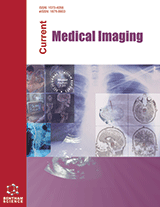
Abstract
Background: This paper provides a systematic review of the application of Artificial Intelligence (AI) in the form of Machine Learning (ML) and Deep Learning (DL) techniques in fighting against the effects of novel coronavirus disease (COVID-19).
Objective & Methods: The objective is to perform a scoping review on AI for COVID-19 using preferred reporting items of systematic reviews and meta-analysis (PRISMA) guidelines. A literature search was performed for relevant studies published from 1 January 2020 till 27 March 2021. Out of 4050 research papers available in reputed publishers, a full-text review of 440 articles was done based on the keywords of AI, COVID-19, ML, forecasting, DL, X-ray, and Computed Tomography (CT). Finally, 52 articles were included in the result synthesis of this paper. As part of the review, different ML regression methods were reviewed first in predicting the number of confirmed and death cases. Secondly, a comprehensive survey was carried out on the use of ML in classifying COVID-19 patients. Thirdly, different datasets on medical imaging were compared in terms of the number of images, number of positive samples and number of classes in the datasets. The different stages of the diagnosis, including preprocessing, segmentation and feature extraction were also reviewed. Fourthly, the performance results of different research papers were compared to evaluate the effectiveness of DL methods on different datasets.
Results: Results show that residual neural network (ResNet-18) and densely connected convolutional network (DenseNet 169) exhibit excellent classification accuracy for X-ray images, while DenseNet-201 has the maximum accuracy in classifying CT scan images. This indicates that ML and DL are useful tools in assisting researchers and medical professionals in predicting, screening and detecting COVID-19.
Conclusion: Finally, this review highlights the existing challenges, including regulations, noisy data, data privacy, and the lack of reliable large datasets, then provides future research directions in applying AI in managing COVID-19.
Keywords: Artificial intelligence, COVID-19, coronavirus, computed tomography, deep learning, machine learning, transfer learning, forecasting, X-ray, ultrasound imaging.
 91
91












